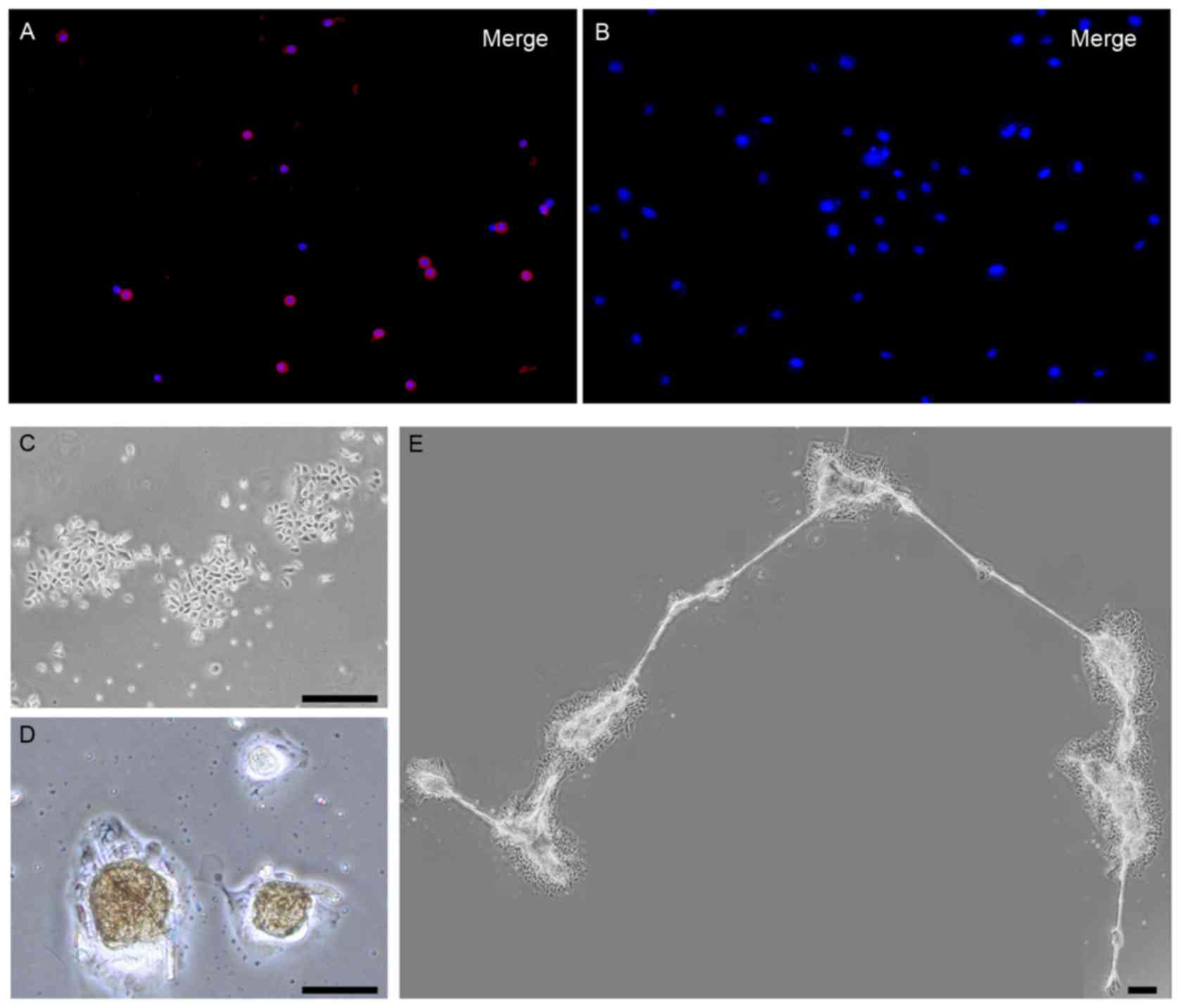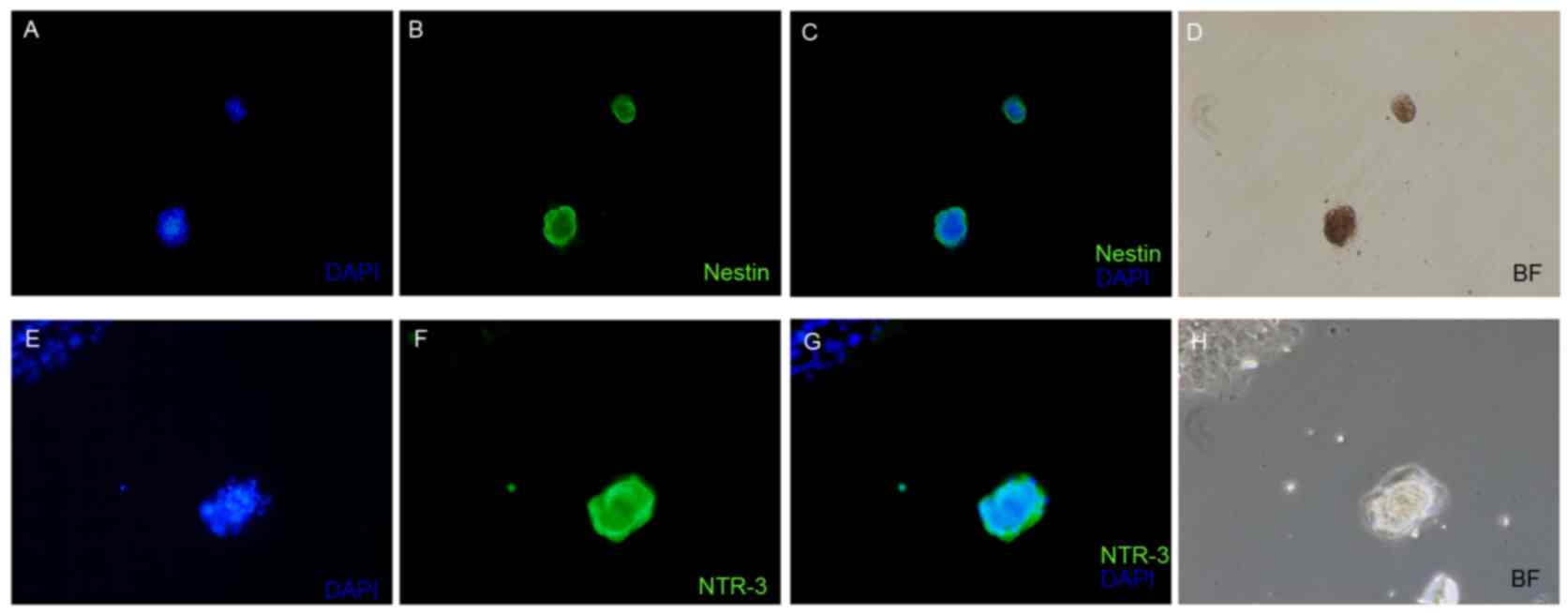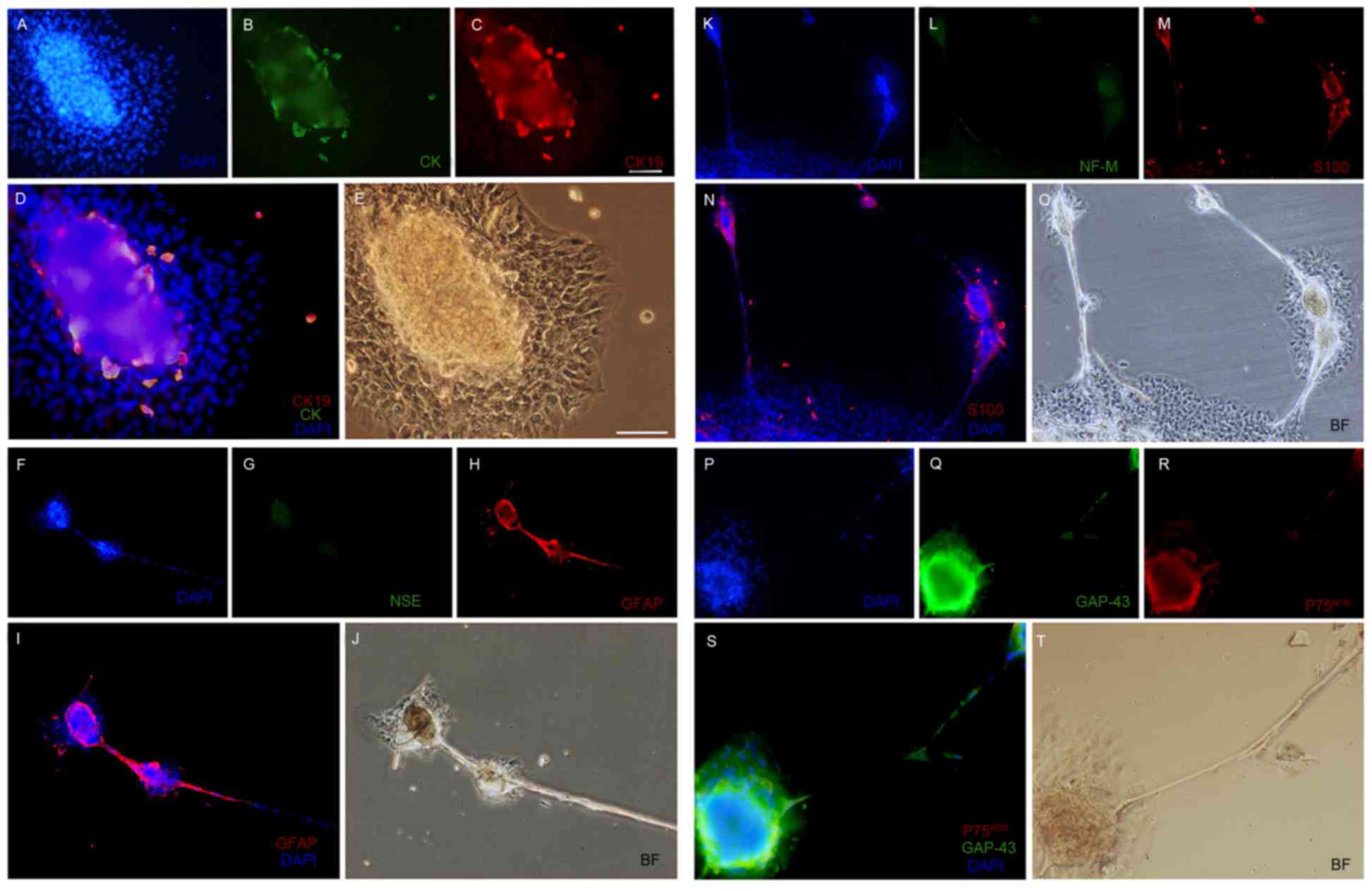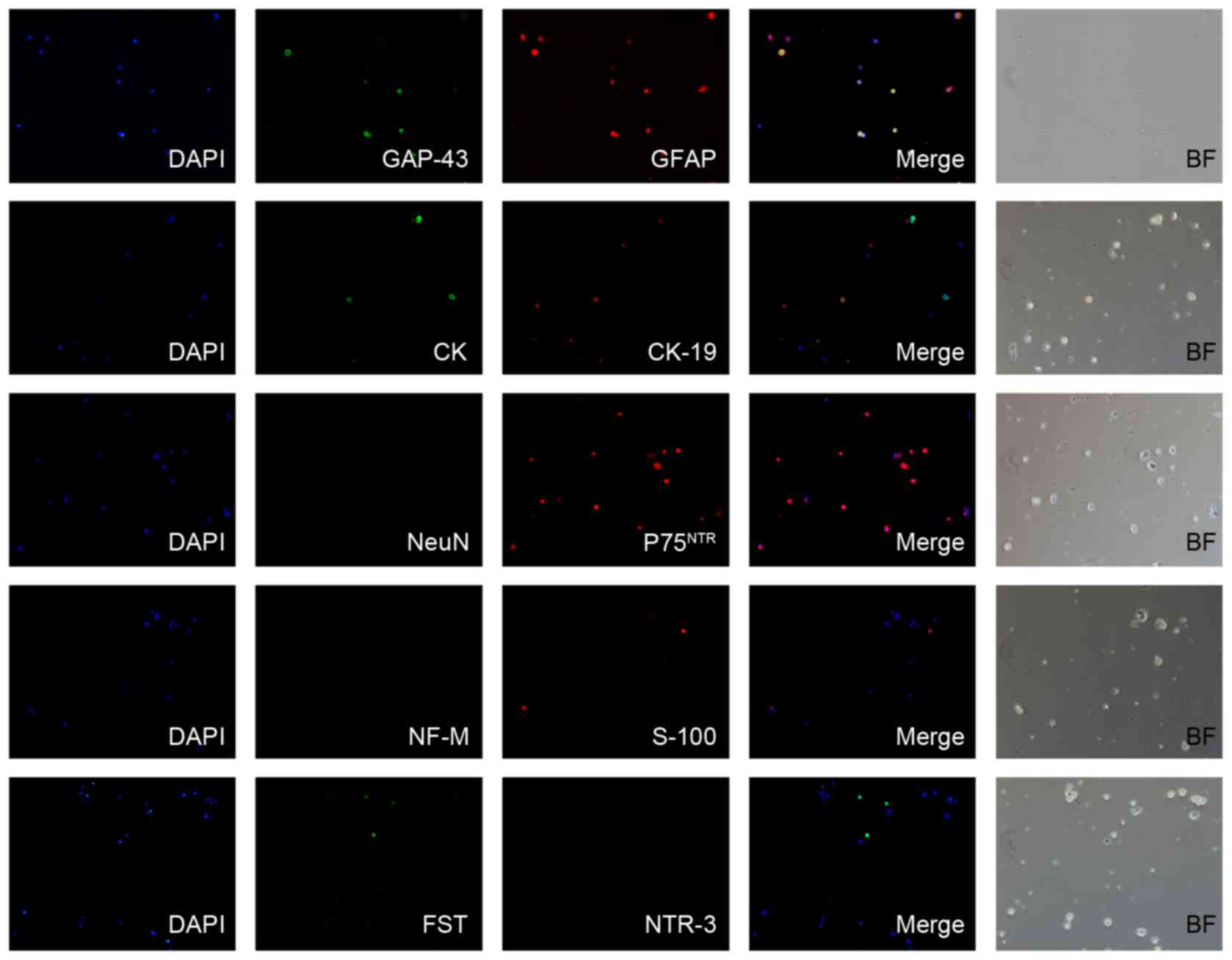Differentiation of nestin‑negative human hair follicle outer root sheath cells into neurons in vitro
- Authors:
- Published online on: May 16, 2017 https://doi.org/10.3892/mmr.2017.6585
- Pages: 95-100
-
Copyright: © Wu et al. This is an open access article distributed under the terms of Creative Commons Attribution License.
Metrics: Total
Views: 0 (Spandidos Publications: | PMC Statistics: )
Total PDF Downloads: 0 (Spandidos Publications: | PMC Statistics: )
Abstract
A specialized quiescent population of hair follicle stem cells, residing in the hair follicle outer root sheath cells (ORSCs), has previously demonstrated pluripotency for differentiation into neural stem cells (NSCs). A previous study indicated that nestin‑positive hair follicle ORSCs are able to differentiate into neurons. However, little has been reported on the isolation of nestin‑negative human ORSCs and whether they can successfully differentiate into neurons in vitro. In the present study, nestin‑positive ORSCs were significantly reduced with a prolonged incubation time in vitro. Following 9 days of primary culture, nestin‑expressing ORSCs disappeared entirely, and ORSCs remained nestin‑negative following 5 days of subculture. Notably, nestin was identified in ORSCs following a three‑step process of neuro‑induction. In addition, neruodevelopmental markers were detected in the ORSC‑derived nestin‑positive spherical cell mass, including the induction of the neuronal specific markers growth associated protein‑43, neurotensin receptor‑3 and p75 neurotrophin receptor, and also the gliocyte markers, glial fibrillary acidic protein and S100. These sphere‑forming cells did not express the mature neuron‑associated markers neurofilament medium, neuronal nuclei and neuron‑specific enolase, which suggested that sphere‑forming cells may preferentially differentiate into neural stem cell‑like cells as opposed to mature neurons or neurogliocyte. In conclusion, ORSC‑driven neural differentiation may be a suitable treatment strategy for neurodegenerative diseases and may possess an important value in regenerative medicine.













